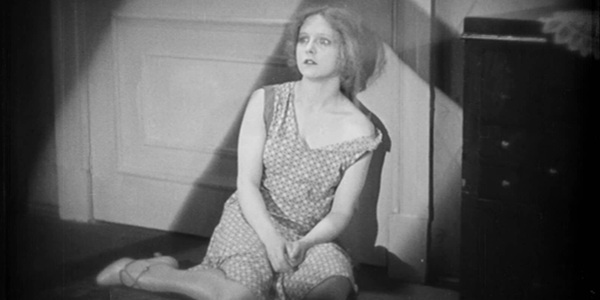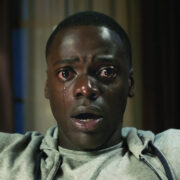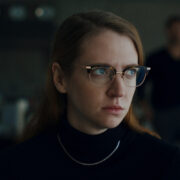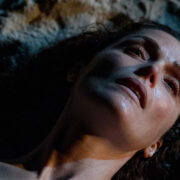Reintroducing Louise Kolm-Fleck: An Overlooked Female Filmmaking Pioneer

Lee Jutton has directed short films starring a killer toaster,…
The girl who would become Louise Kolm-Fleck was born in Vienna in 1881, around the same time that photographer Eadweard Muybridge was first experimenting with making images move. In 1910, she co-founded the first major film production studio in Austria with her brother, Claudius Veltée, her first husband, Anton Holm (who passed away in 1922), and her second husband, Jacob Fleck (whom she married in 1923). She was first credited as a director in 1911 and went on to accumulate more than 100 credits as a writer, director, and producer before she died in 1950. Yet Kolm-Fleck’s name is nowhere near as well-known today as it should be, especially given the groundbreaking nature of many of her films.
The cinema of Louise Kolm-Fleck shone a light on the suffering of women under the patriarchy; her work explored controversial topics that deeply affected women’s lives, including sexual assault and abortion rights. That such films were being made by a woman director (with Jacob Fleck often credited as co-director) close to a century ago is remarkable. That they remain so timely today is unfortunate, true, but that continued relevance makes revisiting Kolm-Fleck’s work all the more important.
In collaboration with Filmarchiv Austria and the Austrian Cultural Forum New York, Metrograph is showing two of Kolm-Fleck’s films, recently restored and paired with live piano accompaniment by one of New York’s great silent film accompanists, Makia Matsumura. It’s a rare opportunity to familiarize yourself with the work of someone who deserves to be recognized as a female filmmaking pioneer.
Dr. Schäfer, Gynecologist
Decades before Agnes Varda focused on the still-taboo topic of abortion in her 1977 film One Sings, the Other Doesn’t, Kolm-Fleck addressed the issue head-on in Dr. Schäfer, Gynecologist (Frauenarzt Dr. Schäfer). Made in 1928, the film is remarkably frank in its depiction of the moral debate surrounding a woman’s right to choose. However, as befits the time that Dr. Schäfer, Gynecologist was made, the two sides of the debate are represented on screen by men: the older, well-respected Professor Hausen (Leopold Kramer) believes that no circumstance justifies the decision to end a life before it has begun, while the younger, more open-minded Dr. Schäfer (Iván Petrovich) wants the legal restrictions surrounding the procedure to be loosened so that women are not forced to give birth to children to whom they cannot give good lives. After all, Schäfer argues, is it not better to have fewer children born into such dire circumstances than for so many to be born that may not survive to adulthood?

The friction between Hausen and Schäfer is exacerbated by the fact that Schäfer is engaged to Hausen’s daughter, Evelyne (Evelyn Holt); further complications ensue when Evelyne’s best friend, Lucie (Agnes Petersen-Mozzuchinowa), confides in Schäfer that a friend of hers is on her deathbed due to complications from an illegal abortion. Poor Evelyn assumes Schäfer and Lucie are having an affair, and so doesn’t push back when her father refuses to grant Schäfer her hand in marriage, instead favoring the ingratiating Dr. Greber (Hans Albers, who would become Germany’s most beloved film star in the 1930s and 1940s). However, Hausen’s stubborn beliefs are finally shaken when tragedy strikes close to home, reminding us that too many people only change their previously immovable opinions on certain issues when those issues affect them personally—something that is unfortunately still true today.
Dr. Schäfer, Gynecologist is an extraordinary melodrama that focuses on the damage abortion restrictions can wreak on women’s lives, especially when the unwanted pregnancy is the result of sexual assault. Of course, women should be allowed to end any unwanted pregnancy, no matter how said pregnancy came about; however, you can imagine that in 1928, focusing on pregnancies resulting from horrifying crimes against innocent women was an easier way to advocate for reforming the law. Nonetheless, the film is no less brave for making its point in such a way, especially for highlighting how improperly performed illegal abortions put women’s lives unnecessarily at risk; it’s a reminder that even if you make something illegal, people will do it anyway, and more dangerously than they would have under the law.
Even though the plot is heightened for dramatic effect, the performances in Dr. Schäfer, Gynecologist are admirably naturalistic, especially Holt as the conflicted young woman caught between her father and her fiancé; her delicate beauty makes her the perfect choice to play the kinds of sympathetic damsels in distress that often were the center of Kolm-Fleck’s works. The camera smoothly moves through each scene, dollying in for close-ups in moments of incredible emotion. Kolm-Fleck handles difficult scenes with a sensitive touch, resisting the urge to linger unnecessarily or explicitly on female trauma to titillate the audience. Watching Dr. Schäfer, Gynecologist, it’s obvious—in a good way—that a woman had a key role in telling this story.
The Girl on the Cross
Made in 1929, The Girl on the Cross, also known as Crucified Girl (Mädchen am Kreuz) at first appears to be your standard Weimar-era urban comedy of romantic entanglements: father Bruno (Fritz Odemar) is being cuckolded by his much younger and very beautiful second wife, Erna (Valerie Boothby), while daughter Marie (Holt, again) is spending her school holidays having fun with her friends and being romanced by a rich classmate. However, the film takes an abrupt turn from sunshine into darkness when Marie is sexually assaulted by a depraved neighbor (Wolfgang Zilzer) who has been stalking her.

Similar to the treatment of traumatic scenes in Dr. Schäfer, Gynecologist, The Girl on the Cross does not explicitly depict the assault, instead using quick cuts and key close-ups to convey the life-altering horror of what has just happened to Marie. From there, the film follows Marie as she struggles in the aftermath of the assault, unable to escape the ever-watching eyes of the man who assaulted her and helpless to push back against his claims that she now belongs to him. Even worse: she must marry him if she wants to remain honorable in the eyes of a society that only values young women for their virginity, discarding them without a second thought once they can no longer be placed on a pedestal of purity. In a world ruled over by the patriarchy, what other options does a girl like Marie have? Should she spend the rest of her life in fear, or just end her life now?
Holt delivers another heartbreakingly good performance as the titular character; her face conveys complex emotions without any need for lengthy intertitles, and her near-paralyzing trauma and paranoia after the assault—she can barely even leave the house without finding the man who attacked her waiting outside—elicits massive anxiety as well as incredible sympathy on the part of the audience. Boothby is also great as Marie’s foil, the wickedly adulterous (and unapologetic) stepmother who cannot stop stepping out on Marie’s dad, but has little of the shame that threatens to utterly destroy Marie.
Kolm-Fleck’s creative use of light, shadow, and unusual camera angles to keep things visually compelling, not to mention some sharp editing that keeps the film moving at a decent pace, manages to keep you from drowning in the utterly depressing nature of The Girl on the Cross, but it’s still devastating to watch unfold. Despite the film’s many strengths, its final act does leave something to be desired, especially from a modern perspective. Nonetheless, The Girl on the Cross is full of the kinds of innovative artistic decisions that were being made during the late silent era, when filmmaking was reaching its apotheosis as a visual art form, before sound came in and changed everything.
Conclusion
Louise Kolm-Fleck deserves her flowers not only for being one of the world’s first female filmmakers, but one of the most forward-looking. While she boasts a lengthy list of screen credits, many of those films are now lost, so we should celebrate the ones we’re lucky enough to still have today.
Dr. Schäfer, Gynecologist and The Girl on the Cross both screen at Metrograph in New York on November 8, 2025 as part of Louise Kolm-Fleck, Feminist Pioneer.
Does content like this matter to you?
Become a Member and support film journalism. Unlock access to all of Film Inquiry`s great articles. Join a community of like-minded readers who are passionate about cinema - get access to our private members Network, give back to independent filmmakers, and more.
Lee Jutton has directed short films starring a killer toaster, a killer Christmas tree, and a not-killer leopard. Her writing has appeared in publications such as Film School Rejects, Bitch: A Feminist Response to Pop Culture, Bitch Flicks, TV Fanatic, and Just Press Play. In addition to movies, she's also a big fan of soccer, BTS, and her two cats.












